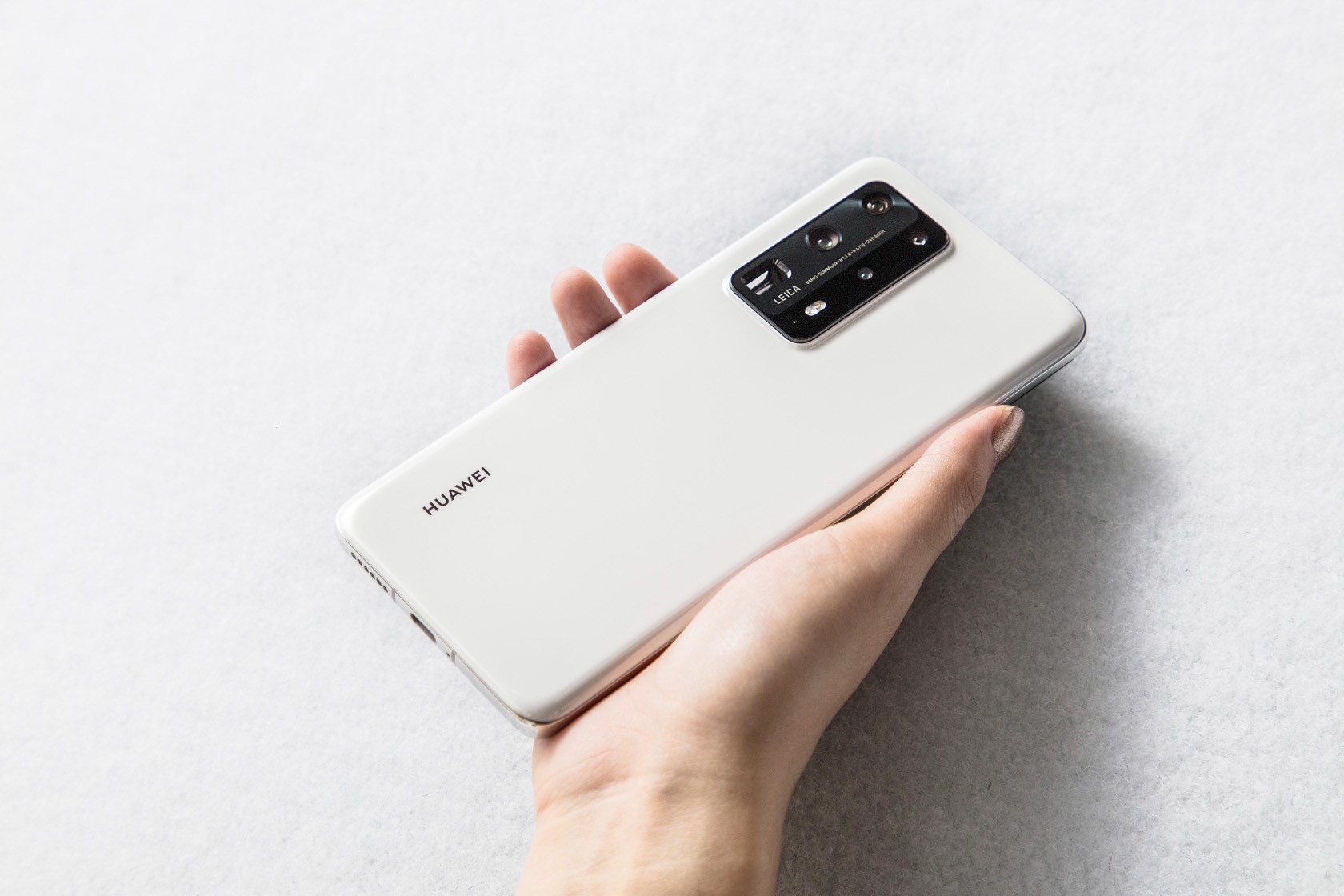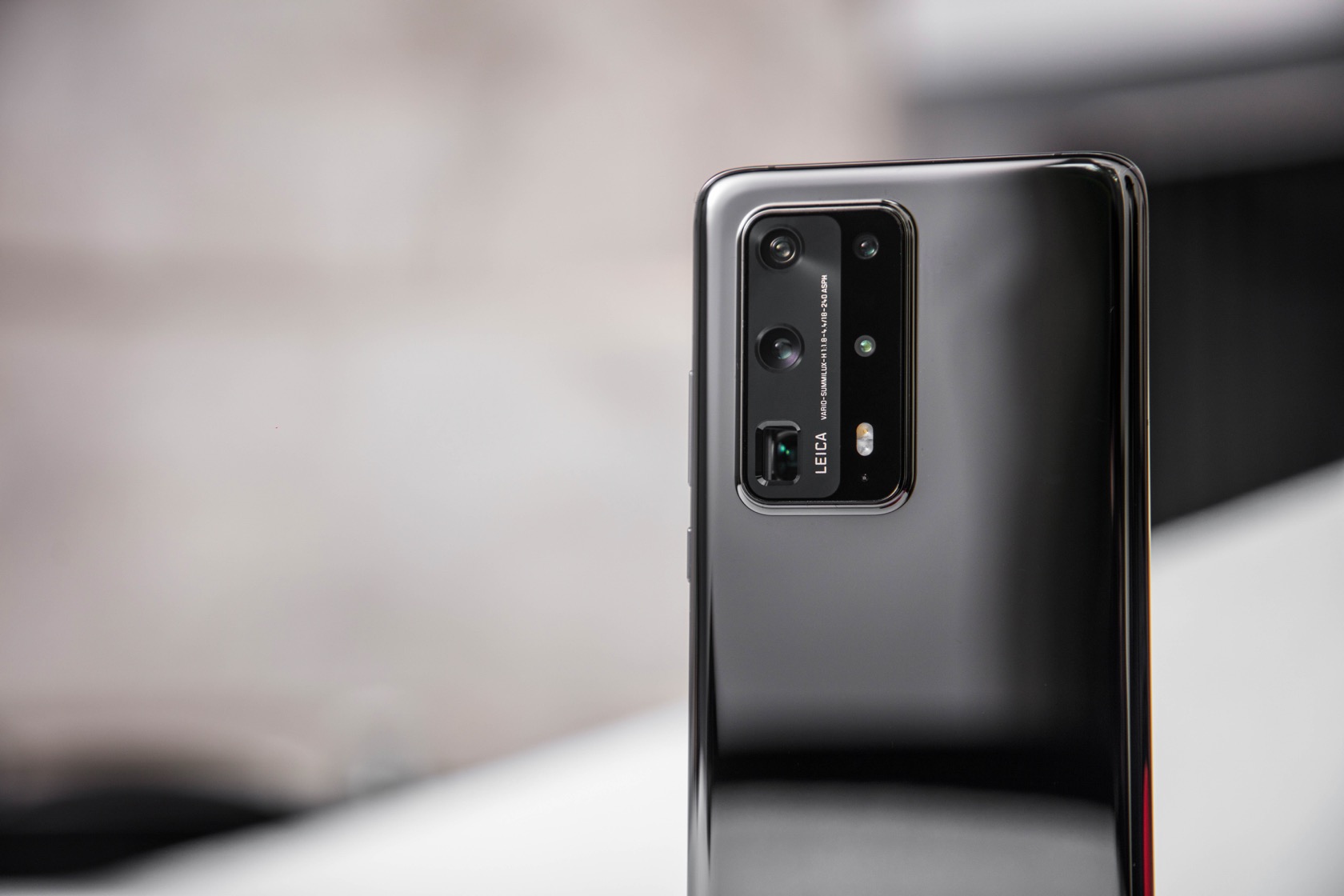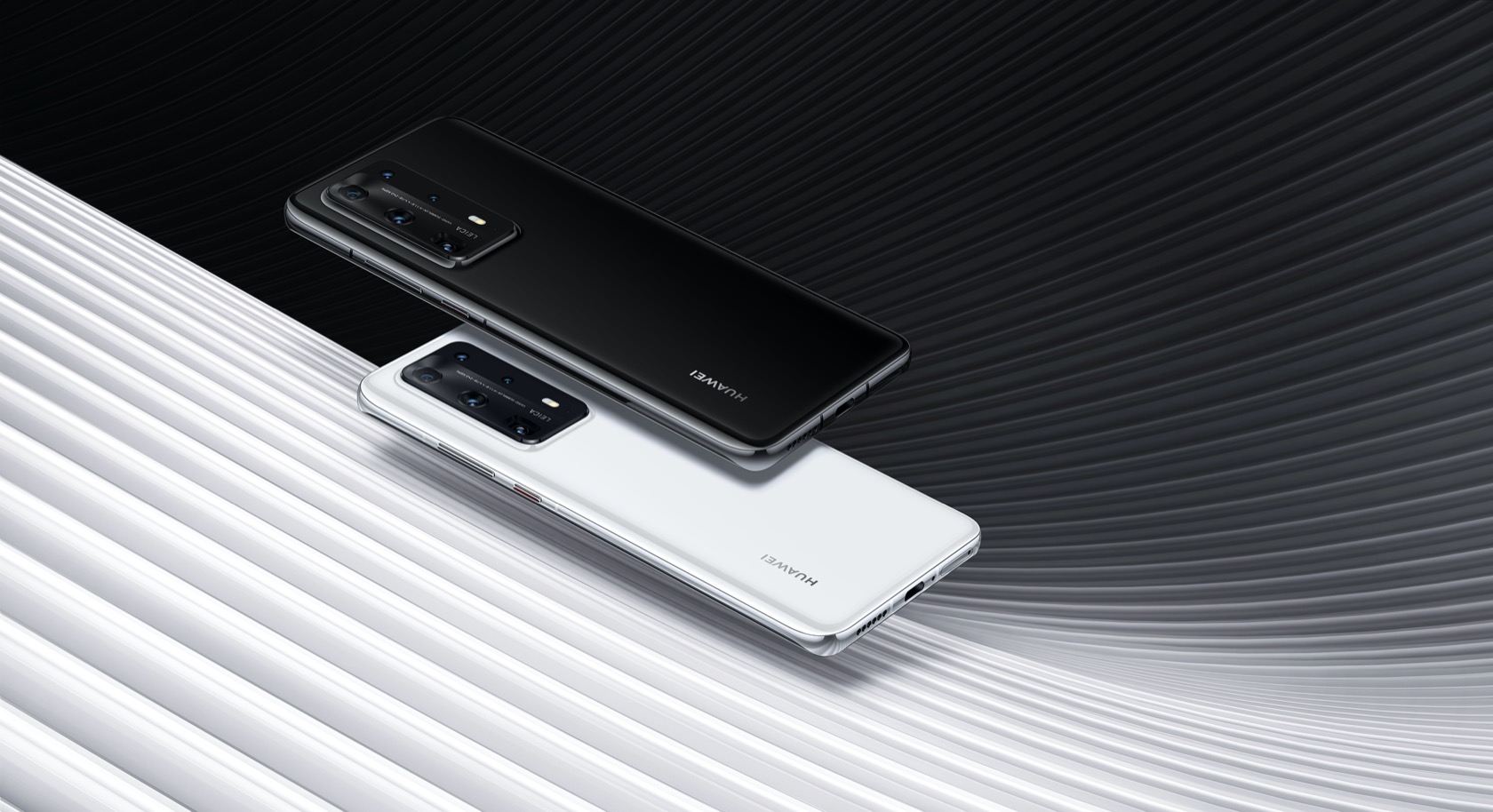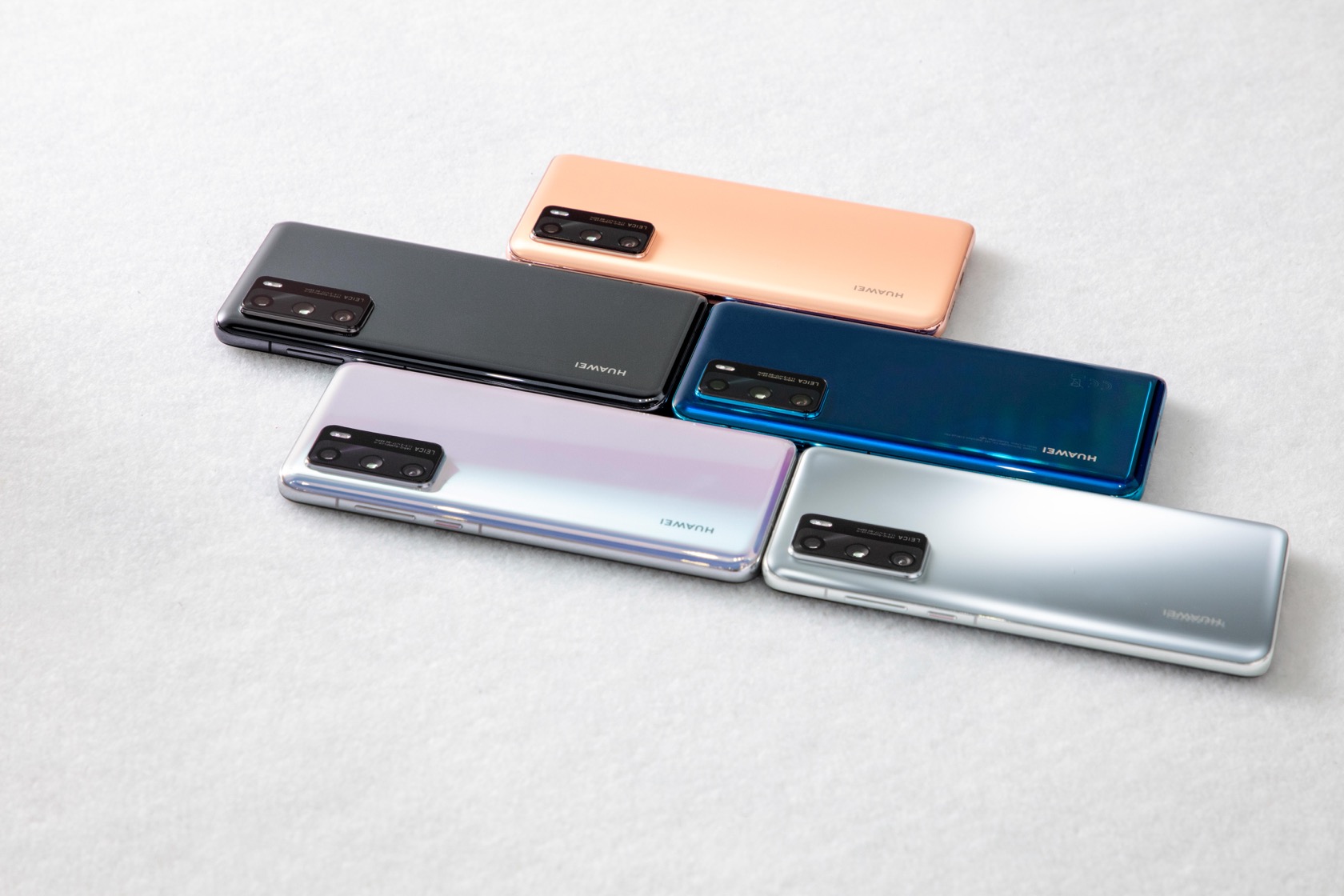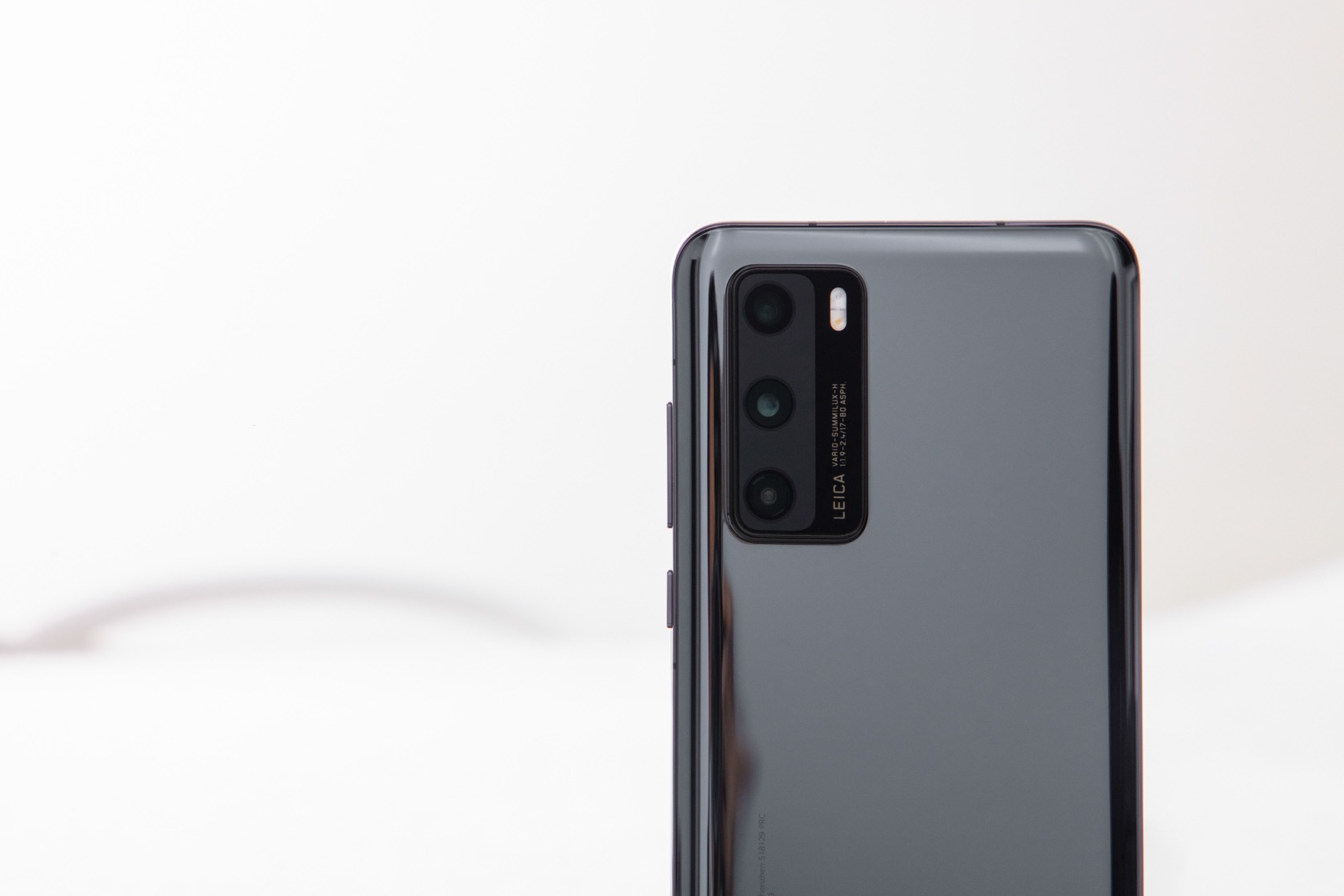Huawei P40 Series Official: Great Cameras And A Great Big Problem
Huawei has officially revealed the P40 series, its flagship photography smartphones, and it now consists of three models with multi-camera arrays. The Huawei P40, P40 Pro, and P40 Pro+ span multiple sizes up to 6.58-inches, with a new "Nanotech Ceramic" body that the company claims has sapphire-like toughness.
That body requires five days of curing, Huawei says, and is then precision milled for a diamond-like sheen. It's not the only detailing the company is calling out today: even the camera bulge on the back has been given etched lines, which are designed to catch and reflect light for a more visually-pleasing device.
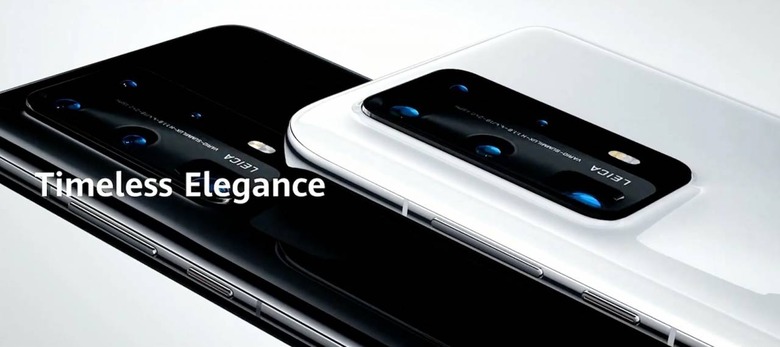
On top of that, Huawei applies a new refractive matte finish. That helps avoid fingerprints and smudges. There'll be multiple colors for the P40 and P40 Pro: Black, Deep Sea Blue, Ice White, Silver Frost, and Blush Gold. As for the P40 Pro+, that will be offered in two finishes: Ceramic Black and Ceramic White. The P40 is IP53 water-resistant, while the P40 Pro and P40 Pro+ are IP68.
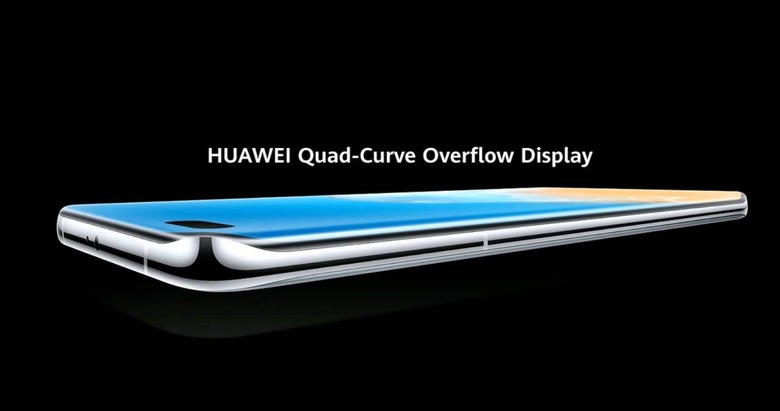
All three phones use what Huawei is calling a Quad-Curve Overflow Display. That wraps around all four sides of the phones, as though water overflowing. It doesn't just look good: it's also designed so that gesture swipes in Android are more comfortable from all directions. On the P40 it's a 6.1-inch 60Hz OLED at 2340 x 1080 resolution, while the P40 Pro and P40 Pro+ get a 6.58-inch 90Hz OLED at 2640 x 1200. All three have an in-display fingerprint reader, larger than before, which Huawei says is 30-percent faster than the old version.
Huawei P40 Series Cameras
As you'd expect, though, it's the cameras which Huawei is most excited about. Like before, it has collaborated with Leica on its flagships, and the P40 Pro+ has a whopping five sensors on its rear. The P40 has three, while the P40 Pro has four.
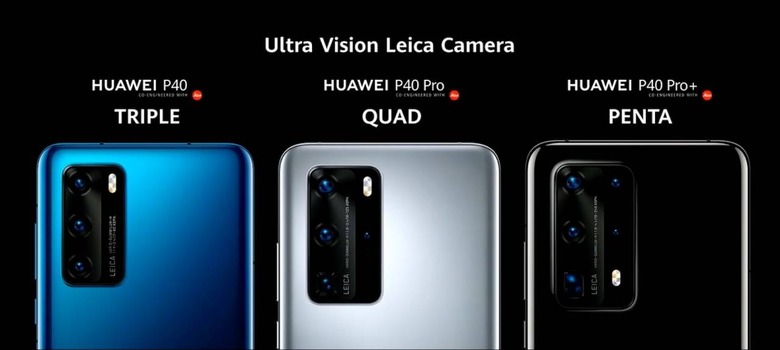
Most exciting is the Huawei P40 Pro+. There's an 40-megapixel Ultra Wide Cine (18mm, f/1.8), a 50-megapixel Ultra Vision Wide with an RYYB sensor (23mm, f/1.9, OIS), an 8-megapixel 3x optical telephoto (80mm, f/2.4, OIS), an 8-megapixel 10x optical periscope telephoto (240mm, f/4.4, OIS), and a Time-of-Flight (ToF) depth sensing camera. Huawei also adds in an 8-channel multi-spectrum color temperature sensor.
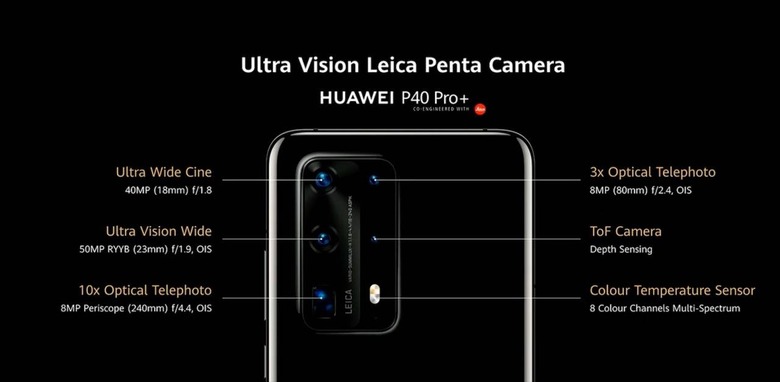
The P40 Pro, meanwhile, has the same 40-megapixel Ultra Wide Cine (18mm, f/1.8) and the 50-megapixel Ultra Vision Wide with an RYYB sensor (23mm, f/1.9, OIS). It adds to that a 5x optical telephoto using the periscope system and a 12-megapixel RYYB sensor (125mm, f/3.4, OIS), plus the ToF and color temperature sensors.
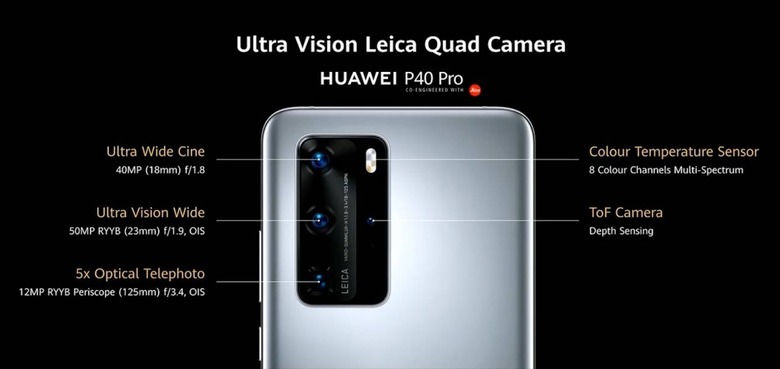
Finally, the P40 has an 8-megapixel 3x optical telephoto camera (80mm, f/2.4, OIS), a 50-megapixel RYYB Ultra Vision Wide camera (23mm, f/1.9), and a 16-megapixel Ultra Wide (17mm, f/2.2). It also gets the new color temperature sensor.
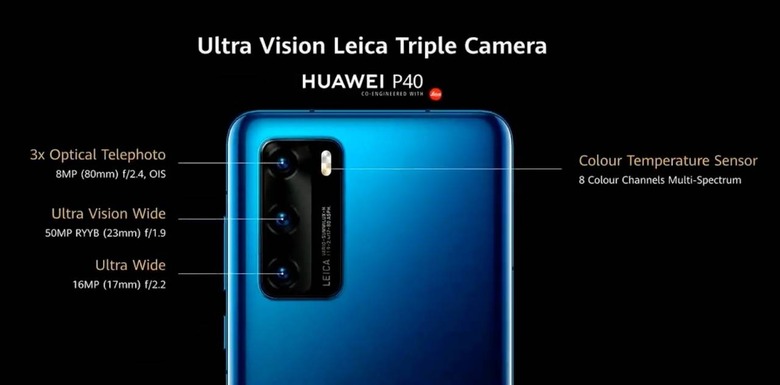
Huawei has paired its new sensors and zooms with a new Octa PD AutoFocus system. That promises faster AF lock, particularly in low-light situations. The P40 Pro and P40 Pro+ support 10x continuous shot, too.
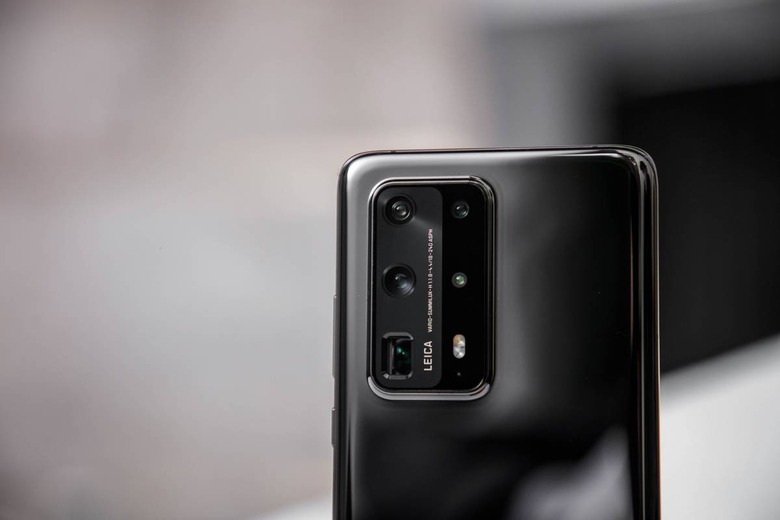
It's not the only software enhancement. As before, Huawei is using AI to automatically recognize scenes and adjust the camera settings proactively, but the P40 series introduces Golden Snap. That combines burst photos with AI, doing analysis on over 90 facial features and over 30 different postures to select the best image out of the burst.
It doesn't stop there, though. Golden Snap also promises to remove passers-by in the image, and can even remove reflections from glass and other reflective surfaces.
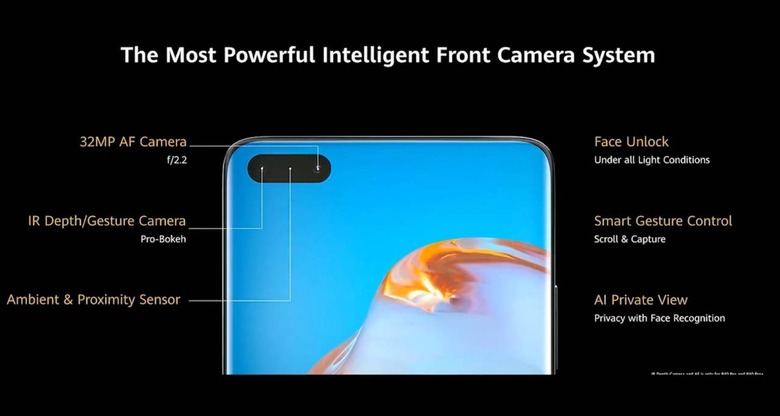
On the front, there's a cut-out in the OLED display with three different sensors. A 32-megapixel camera (f/2.2) is joined by an IR depth/gesture camera, and an ambient/proximity sensor. The P40 Pro and P40 Pro+ get autofocus, too.
The result is both better bokeh, Huawei says, as well as faster face-unlock, including in low-light conditions. The phones will also record 4K selfie video. An attention-aware screen will track when you're watching the P40 and stop it from locking, even if you're not touching the display. Huawei is using its gesture sensor for hands-free scrolling and screenshots too.
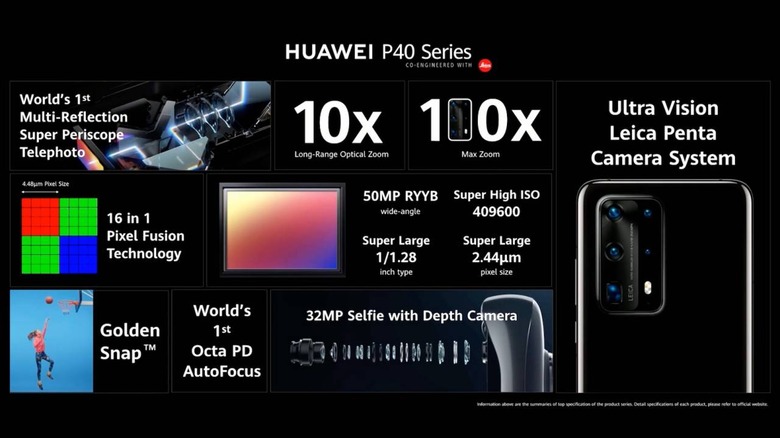
For video, the P40 Pro and P40 Pro+ get 4K HDR+ capture at 60 fps. There's dual OIS and AIS stabilization, directional audio zoom using three microphones, 7680 fps ultra-slow-motion support, and real-time bokeh. Huawei says low-light performance is particularly improved.
P40 hardware and software
Inside there's the Kirin 990 5G processor that Huawei has used in the Mate 30. The P40 has a 3,800 mAh battery and will fast-charge at 22.5W with a USB-C power supply. The P40 Pro and P40 Pro+ get larger, 4,200 mAh batteries, and up to 40W charging both wired and wireless.
There's a Dual SIM slot and eSIM. You can use a Nano SIM and an eSIM, or slot in one of Huawei's NM memory cards. WiFi 6 is supported, too.
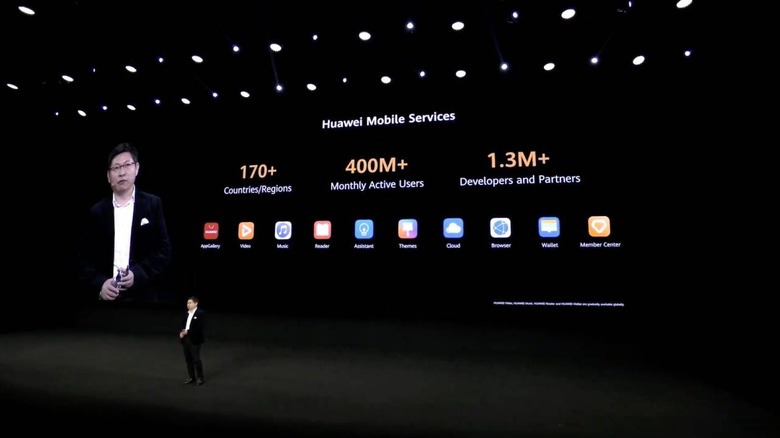
What you don't get, of course, is Google apps or services. While it runs Android, Huawei's P40 series uses the company's own AppGallery store rather than the Google Play store. It's working with TomTom on a Google Maps replacement, and has its own voice assistant called Celia, which will stand in for the Google Assistant.
Whether that will be enough to convince potential buyers remains to be seen. Few would deny that Huawei's P-Series phones have serious photography talents, but the continued absence of Google apps and services leaves them at a significant disadvantage compared to Samsung and others. While side-loading apps is possible, it's tough to recommend any Huawei phone right now to a mainstream audience outside of China.
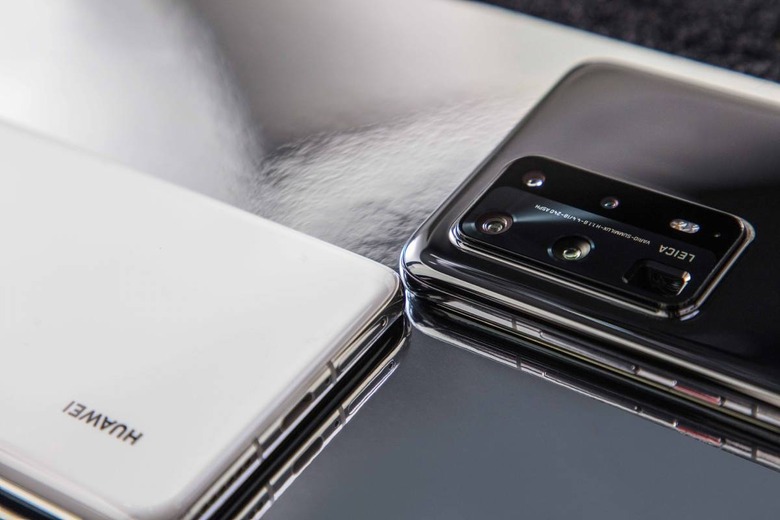
Huawei says the P40 and P40 Pro will go on sale from April 7. The P40 will have 8GB of memory and 128GB of storage, and be 799 euro ($868), while the P40 Pro will have 8GB of memory and 256GB of storage, and be 999 euro ($1,086). The Huawei P40 Pro+ will follow on in June 2020, with 8GB of memory and 512GB of storage; it'll be 1,399 euro ($1,520). No word on an official US release, and we're not expecting that to change any time soon.

